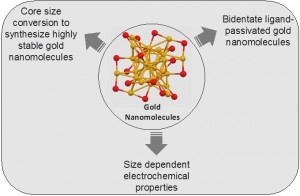Dr. Henry Ashbaugh from Tulane University will present “Who’s Afraid of the Hydrophobic Effect” to the department.
Abstract:
The adage “oil and water don’t mix” underlies many phenomena of the aqueous environment, including surfactant assembly, folding of globular proteins, biological membrane formation, and the fate of pollutants in nature. If one examines the interaction of hydrophobic/non-polar substances with water more closely, however, one sees that the actual situation is more subtle. For example, many soluble proteins are globular at one temperature but unfold upon both heating and cooling. Simpler examples are the solubilities of inert gases and non-polar oils in water that exhibit solubility minima with increasing temperature, attributable to thermodynamic signatures characteristic of hydrophobic hydration. The application of pressure, on the other hand, can mollify the hydrophobic driving forces for assembly and denature proteins, while surfactant micelles exhibit maxima in their critical micelle concentrations with pressure, indicative of significant volumetric differences with protein folding. The distinctions between water and organic solvents are generic and are a central puzzle of hydrophobic hydration.
Computer simulations applied in conjunction with statistical thermodynamic tools have proven to be invaluable in piecing apart the molecular origins of hydrophobic hydration. In this talk I discuss the application of simulations in my group to examine hydrophobic phenomena from molecularly detailed models of assembly to more simplified descriptions that permit seamless examination of the atomistic-tomacroscopic length scales relevant to assembly. Specific molecular examples include the heat induced collapse of poly(N-isopropylacrylamide) in aqueous solution and the re-entrant micellization of ionic and non-ionic micelles with increasing pressure. In the second half of the talk I discuss the application of scaledparticle theory, which describes non-polar species as a repulsive spherical excluded volume, toward investigating the effects of temperature and pressure on hydrophobic hydration.

